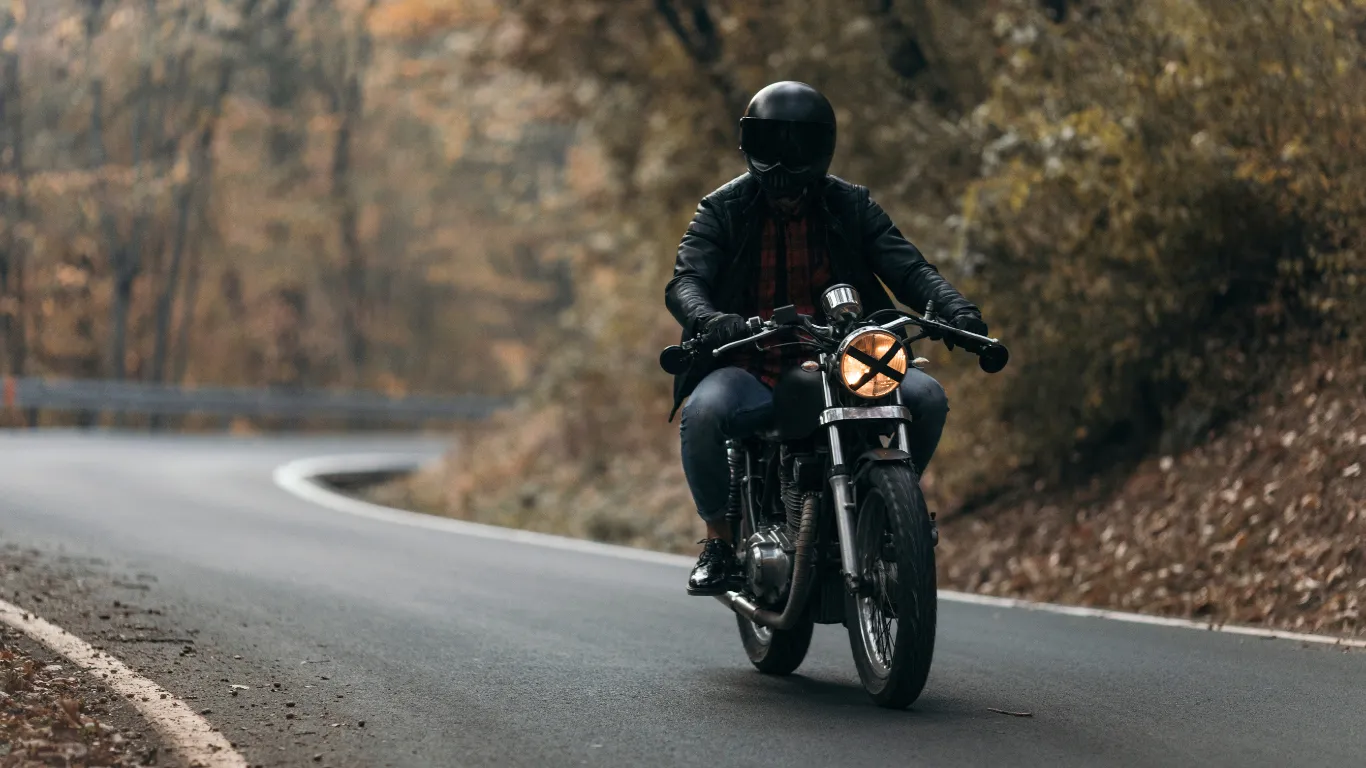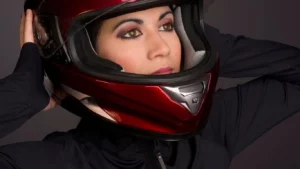Whether you are allowed to paint your helmet or not is completely based on your state’s laws. I love to repaint and decorate my helmet with a variety of paints. So, here I’m going to share all the information regarding the coloring and procedures to complete the task.
If we customize our helmet to be unique, colorful, or to catch the attention of others while driving, others will notice and move towards safety. We can even customize our helmets ourselves.
To paint your helmet legally, you should first understand the brand and the number printed. You may contact the manufacturer to make sure that the paints you are going to use are suitable for the helmet material.
Why Do You Need To Paint The Motorcycle Helmet?
Do you know there are a few advantages to painting the helmet? If you’ve been using it for a while, you can make it look brand new by repainting it. And if you have an accident, it will be a good way to seal the broken sides and scratches as well. Let’s understand it in depth with the following descriptions:
1. It Will Hide The Scratches:
Touch-up paint is one of the most effective and durable options for repairing our helmet scratches. However, skill and care are required for color matching, cleaning, and preparation of the scratches. With the passage of time, it gets so many scars and scratches on the outer surface, but your design and idea of coloring can fix them all.
2. Give a New Look To Your Helmet:
Unlike motorcycle helmets, bicycle helmets also look cool. However, fashion is changing as a result of generational shifts. There are many new designs of helmets on the market.
3D-painted helmets have recently entered the market. Everyone wants their helmet to look unique and good. Many youngsters love to look attractive, and painting your helmet can accomplish your desire.
Is It Legal To Paint Motorcycle Helmets?
Helmets are one of the most effective pieces of motorcycle safety equipment. Damage and scratches to your helmets may occur over time. Rather than buying a new one, some people think that they can repair it and use it once again.
Painting the helmets will restore their original appearance and may necessitate extensive knowledge.
Yes, you can legally paint motorcycle helmets in any state, but before you begin, inquire with the manufacturer about the materials that are legal. The best part is that it can give your helmet a new look while also concealing damage.
You can’t use any kind of paint; you need to find one that actually suits that helmet material. You should also be mindful of the entire process.
While painting the helmet, some safety precautions should be taken. Try to avoid dark colors, especially when you ride at night.
What Safety Factors Should Apply Before Painting The Helmet?
Painting a helmet isn’t an easy task; you should be aware of some tips while performing the same task. Let me help you with the following tips that you should keep in mind before starting the process:
1. Choose The Right Colour
Whenever you go to the market to choose the color for your helmet, keep some points in mind.
Dark colors should be avoided in favor of bright colors such as white and yellow, which will help to prevent accidents.
Light or bright colors are visible even from a far distance, which will keep you away from any mishaps.
2. Choose The Right Paint
There are many factors to consider while selecting the paint for the helmets. The important question is: what kind of paint will you use while painting the helmets?
Different paints are used for painting the helmets’ surfaces, so it is important to choose the correct paint.
Most people use enamel or lacquer paint on their helmets. Enamel paints are good and are more durable than lacquer paints.
At some point, it is good to modify our helmets. Some specialized paints are used to design things at night so that they can be seen at night. Whatever paint you choose, make sure that it is compatible with our helmet material.
3. Use Gloves While Painting
Nitrile gloves provide an excellent barrier for painting the helmets. Nitrile gloves are resistant to a wide range of harsh chemicals, solvents, oils, bases, and other substances that can pass through our skin and enter our bodies. Some of the chemicals cause health problems.
To protect yourself, wear chemically protective gloves every time.
4. Never Use The Strippers
Fast-working paint strippers usually contain methylene chloride, which can burn our eyes and skin. Eyes and skin are very sensitive parts.
People face problems while removing paint. It mixes the fast-changing technologies of the product development landscape with restrictions on the use of some of the most effective paint stripping chemicals, and there’s trouble.
5. Don’t Apply Paint Near The Flame
Oil-based paints are flammable, whereas latex-based paints are not. Paints and resins are volatile substances that can catch fire if exposed to a small flame for an extended period of time.
So, whenever you start painting the helmet, make sure there is no source of fire near you, and don’t smoke as well.
How To Paint Motorcycle Helmets?
Finally, you have reached the main stage, where you will learn to paint the motorcycle helmet step by step. Follow them and get your new stylish, customized helmet designed by you.
1. Clean The Helmets
Whenever you come after riding, it is obvious that our helmets may get dirty, and you should have a proper idea of how to clean them. There are a lot of effective ways to clean up your helmet.
While the interior, lining, and cheek pads are being washed, you can clean the outside of the helmet with a soft cloth towel or microbial or any detergent if you have a shining clean oil-free shell.
Take some shampoo if it is good enough for your head; it’s good enough for your helmet, but detergent may be a bit harsh for the interior.
2. Cover That Part Which You Don’t Want To Paint
Remove any fittings that you don’t want to paint, such as the visor on a motorcycle helmet or the face marks on a football helmet; simply pull off any pieces that are attached to them, then use masking tape to cover any parts you shouldn’t remove, like the internals and vents. Make sure only the area you want to paint is exposed.
During the painting process, use paper or plastic and tape to shield the inside of the helmet from the paint, removing any internal wear or any other essential part of our helmet structure.
3. Sketch The Design
You can use stencils, stickers, and tape to make your design. Take your time so that your handmade design will look just like what you have imagined.
Use thin black lines to make your design stand out from far away and make a complicated geometric pattern. Try cutting strips of masking tape and arranging them on your helmets.
4. Paint The Design With The Right Paints and Brushes
These water-based paints are safe to use on helmets.
Each layer of paint must dry before applying the next one so that every layer can be properly adhered to the surface of your helmet.
This will help to keep the paint from peeling. You can also apply your base layer first and then add highlights, shadows, and any finishing touches.
If you want to spray paint on your helmet, use an airbrush instead of a direct can; a spray will allow you to cover your helmets in a more even way that doesn’t paint any safety stickers that may be on your helmets.
If you applied any masking tape to make your design, remove the tape slowly and gently, one after the other, to avoid inadvertently damaging the designs.
5. Apply Clear Coat To Protect The Paints
Shake the can of clear coat for 1 to 2 minutes before applying it to your helmet to ensure that the solvent and clear coat are fully mixed together, then position the nozzle of the can a length away from the helmet and spray, moving the can side to side and lightly coating the entire surface of the helmet.
Let the clear coat dry for 10 to 15 minutes, then repeat the process three times, ensuring that the helmet is evenly coated and the paint is protected.
How Much Does It Cost To Wrap A Bike Helmet?
Wrapping the helmet with vinyl is the most cost-effective way of transforming its appearance.
The baseline cost is $300, and it can be as expensive as $2000 depending on different factors, such as the quality of the vinyl used.
It is advised to always use high-quality paint to get the best result. Factors on which cost depends are the size of the helmet and the concept complexity of the design; the helmet areas are of different sizes and shapes.
You should use the best method at the lowest possible cost to achieve the desired result.
How Long Does It Take For Paint To Dry On Helmet?
Depending on the product, paint a light coat that covers the entire helmet and allow it to dry. You should wait between 15 minutes and an hour to apply the second coat again using a short brush, apply a second coat, and paint the helmet.
Allow these coats to dry overnight, place the helmet on a dry towel, and pop it up slightly to allow the air to circulate. Now leave it to dry naturally. The whole successful process usually takes 4-5 weeks.
Conclusion:
As you need time and patience to do any task, similarly, you have to accomplish helmet painting. If you find this article useful, don’t forget to share it with others who are seeking the same information through posts and also share your experience with us so that we can keep providing you with posts regarding motorcycles.






